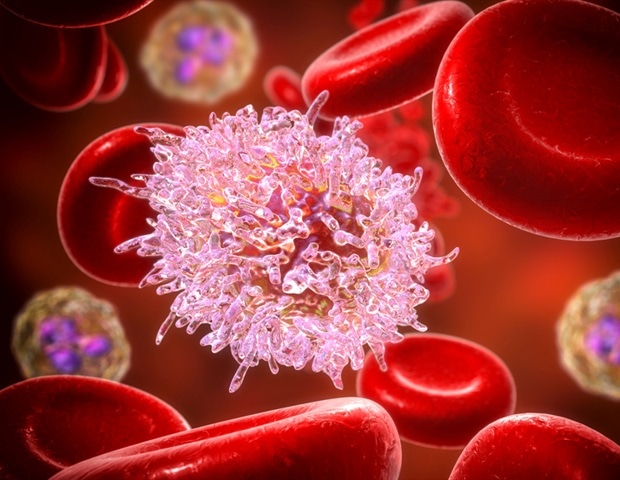
Individuals with Myotonic Dystrophy Sort 1 (DM1), the most typical adult-onset type of muscular dystrophy, progressively lose muscle mass and energy of their decrease legs, palms, neck and face. The results of the situation lengthen to the cardiac and central nervous techniques and the gastrointestinal organs.
The laboratory of Dr. Thomas A. Cooper, professor of pathology and immunology, of molecular and mobile biology and of molecular physiology and biophysics at Baylor School of Drugs, has lengthy been enhancing our understanding of DM1. Within the present examine printed in Human Molecular Genetics, Cooper and his colleagues examined a technique to enhance coronary heart defects related to the illness and uncovered an sudden new perception into the situation.
Cardiac issues have an effect on 50% of DM1 sufferers and are the second main explanation for mortality in affected people, after respiratory insufficiency ensuing from skeletal muscle losing.
“DM1 impacts varied facets of cardiac perform, however primarily entails conduction delays and arrhythmias, issues with {the electrical} system of the guts,” mentioned Cooper, who is also the S. Donald Greenberg and R. Clarence and Irene H. Fulbright Professor and a member of the Dan L Duncan Complete Most cancers Heart at Baylor. “Our lab has developed a mouse mannequin that replicates lots of the cardiac traits noticed within the human illness. On this mannequin we examined an method to reverse the cardiac issues of the situation.”
The widespread domino impact of 1 mutation
DM1 is brought on by a mutation within the DMPK gene that makes it longer by including further three-DNA constructing block repeats (CTG). Whereas the unaffected inhabitants carries 5 to 37 repeats, individuals with the situation have 50 to 3000 CTG repeats.
Carrying this mutated DMPK gene has a domino impact that alters the way in which a whole bunch of different genes are usually expressed throughout improvement. SCN5A within the coronary heart is one in all these genes. The fetal coronary heart predominantly expresses a fetal type of protein SCN5A. As the person develops, the guts produces much less of the fetal kind and the grownup type of the protein turns into predominant.
In DM1, the fetal-to-adult transition of SCN5A is altered – the fetal SCN5A protein is considerably elevated within the grownup DM1 coronary heart. The slower electrical exercise related to the fetal SCN5A kind is related to DM1, as we and others have proven. The research demonstrated that elevated ranges of the fetal SCN5A resulted in cardiac conduction deficits per DM1. SCN5A is a major candidate for arrythmias on this situation.”
Dr. Larissa Nitschke, first writer, postdoctoral affiliate within the Cooper lab
The purpose on this examine was to find out whether or not decreasing the expression of fetal SCN5A protein within the grownup coronary heart in a mouse mannequin of DM1 would reverse arrythmias.
“We used CRISPR/Cas9, a laboratory approach that allowed us to delete the gene for the fetal type of Scn5a from the mouse genome. The ensuing mice completely expressed the grownup Scn5a kind. “To our shock, mice missing the fetal type of Scn5a didn’t enhance conduction delays and structural and useful coronary heart deficits, indicating that this technique shouldn’t be enough to appropriate the guts defects brought on by the expression of the additional CUG repeats,” Cooper mentioned.
“We had been intrigued by this sudden discovering, so we continued investigating and found that, each in mice and sufferers with DM1, the degrees of grownup SCN5A had been about half of what’s current in people with out the illness,” Nitschke mentioned. “Sufferers should not solely expressing greater ranges of the fetal kind relative to the conventional grownup kind, but in addition their ranges of the grownup kind are half of these of an individual with out the situation.”
“Our findings have supplied a deeper understanding of DM1. They present that correcting the elevated expression of fetal Scn5a shouldn’t be enough to enhance DM1 cardiac alterations and recommend that the discount of the degrees of grownup SCN5A and possibly different proteins might contribute to the cardiac defects in DM1,” Cooper mentioned.
The researchers at the moment are testing whether or not rising SCN5A within the coronary heart mannequin will cut back the cardiac issues of the situation.
Rong-Chi Hu and Andrew N. Miller, additionally at Baylor, contributed to this work.
This work was supported by the Nationwide Institutes of Well being grants (R01HL147020, R01AR082852, F32AR083267, P30CA125123, S10OD032380, UM1HG006348 and R01DK114356) and a postdoctoral fellowship from the Myotonic Dystrophy Basis.
Supply:
Journal reference:
Nitschke, L., et al. (2024). Rescue of Scn5a mis-splicing doesn’t enhance the structural and useful coronary heart defects of a DM1 coronary heart mouse mannequin. Human Molecular Genetics. doi.org/10.1093/hmg/ddae117.

